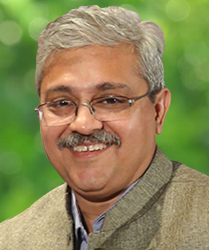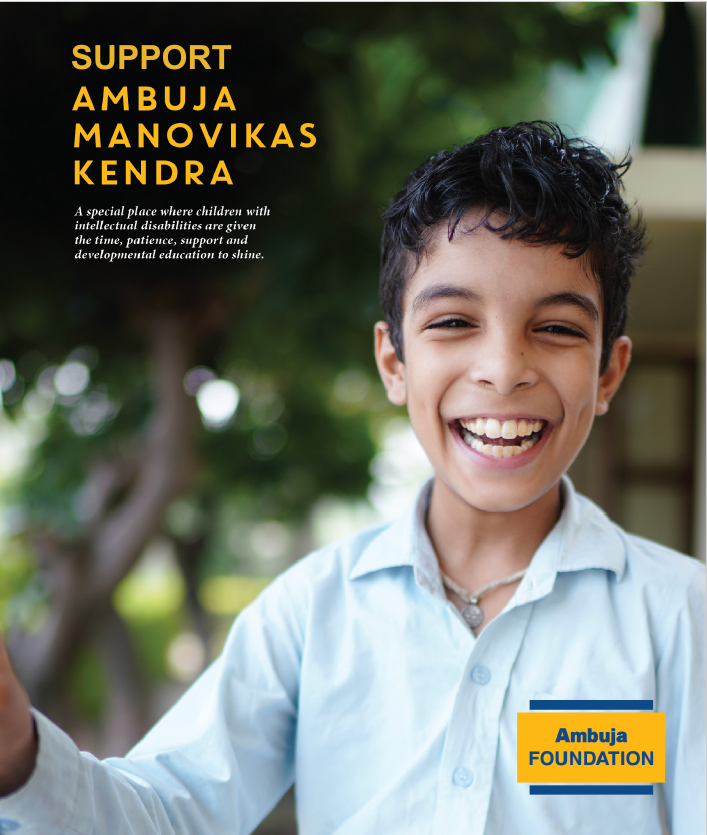Apoorva Oza is one of those people you speak to who leaves you in awe of his experience, knowledge, and perspective on all things agriculture and rural development – the man’s depth of understanding on the subject, and humble, down-to-earth nature, is something to behold.

As the Global Lead at the Aga Khan Foundation, he oversees the Agriculture and Climate Resilience themes. He was also the founding Chairman of the Coastal Salinity Prevention Cell, a role he held for 11 years, which has been spearheading knowledge generation, research, and collaborative projects to tackle the crucial, yet overlooked issue, of salinity along the Indian coastline.
Ambuja Foundation’s Thrive caught up with him to understand his journey and thoughts on salinity.
The genesis of Coastal Salinity Prevention Cell
We start our conversation by discussing the genesis of CSPC back in 2004, and how its work has evolved over the years.
“When it comes to tackling salinity, a smaller unit of operation is palliative at best and does not substantially address the issue since the aquifer affected by salinity ingress is large, across many villages.. This is unlike watershed, where you can have a small unit of operation and be effective.” Apoorva says.
When the Aga Khan Rural Support Program (AKRSP) first started working in coastal Gujarat, Ambuja Foundation too was present in Kodinar, with Tata Trusts supporting many NGOs along the coast.. But all the work was in isolation. It was not long before all three large organizations realized there was a need to work together.
“Salinity is a cross-cutting issue along the coast, and it requires people to unite in their efforts, along with getting government support to drive the large infrastructure projects the issue requires.” Mr Oza said. “We realized that there was a lot of knowledge generation required for this sector – the Government and NGOs were both struggling. There was a need for an entity to take the lead on these matters, and that went beyond organizational boundaries.”
“So we chatted with Tata Trusts who thought it a good idea, as did Ambuja Foundation. We tried to get everyone on board, but everyone had different roles and agendas, so we decided to go with just those who agreed that there was a need for a larger role.” He said.
CSPC: Getting Down to Work
Conceptually CSPC divided the coast into 3 areas – fully saline areas within 2-5km distance of the sea; a ‘prone to salinity’ belt, which experienced salinity in bad years of drought; then non-saline areas, which are interior but bordering saline areas, and therefore vulnerable.
CSPC then divided the solution set into 2 parts:
-
Helping people cope with salinity (like promoting drinking water solutions like RRWHS.)
-
Mitigation work to try to stop and push back salinity, which requires a lot of work on water recharge and reducing water use (like changing cropping patterns, water efficiency, and promoting micro irrigation.)
“Drinking water coping strategies have been effective in 80-90% of villages, but mitigation work is only effective where there is scale – that’s where organizations like Ambuja Foudation are needed.” He said. “Part of the problem is a lack of resources to go so big, so there is a big resource gap in tackling this issue.”
“Additionally, when it comes to mitigation work, there is a challenge of the efforts leading to a zero-sum game – you recharge the water table, but farmers continue to increase demand and extract more and more, resulting in a nil gain to the groundwater table. So there was a need to address the demand side also.” He said.
“Meanwhile, we were working on a lot of policy issues at Gandhinagar, and carried out a lot of good studies – a big part of our work was around influencing policy and knowledge creation,” Apoorva said.
“There was also a need to highlight the issue in the local media, so we were the key driver of that, with good traction. We did some national workshops to bring the issue into the national spotlight, but couldn’t really highlight the issue at a national level, consistently” Mr. Oza said.
Salinity Needs to Be Put on the Agenda
Sadly, salinity as an issue has not seen the limelight. “It’s an issue that most people are avoiding – India has so many problems there is a gradation of problems. Many of India’s saline areas are found in ‘well-to-do’ states like Gujarat, and Maharashtra so they are not a strategic priority for many funders. Even within states, coastal areas are not as economically poor as tribal areas or non-coastal areas. If you assess all coastal areas, the first priority for the governments of coastal area states is ports and fisheries.” Apoorva outlines.
It seems people at lower levels of government are more willing to listen, as they understand the gravity of the problem. “If you talk to the collector in areas they will listen, but everyone else remains silent. Even the people affected by it do not complain and cope, by either migrating or simply accepting it and adjusting to living a lesser quality of life.” He said.
“We need to be more innovative in positioning salinity as part of climate change. Coastal Gujarat is a major hotspot for climate change, where most disasters will impact the coast, and this positioning will align with government priorities. Climate change will amplify the challenges of coastal areas, hence we need to highlight the coastal areas at the state and national level.” Apoorva said.
However whilst putting on the agenda is a challenge, the hurdle also remains on how to solve such a vast issue. “Like Climate Change, it’s such a major problem that people simply throw up their hands and feel it’s beyond their individual efforts. Additionally, tackling it also takes time - if you don’t have a 5-year horizon solution, then this issue cannot be addressed... Since most recent funding is of 3-4 years project duration, getting long term funding remains another key challenge.” Mr. Oza says.
Ambuja Foundation – A Grounded Organisation
Again, this is where working with Ambuja Foundation provides another benefit. “The main advantage in working with Ambuja Foundation is that they have stuck around. Many CSR entities follow “fads” and keep moving on to the next fad. Ambuja Foundation has stuck to a core because they know it takes 10 years to get a result, and only then have they added to their portfolio. Over time, and with impacts, they have layered their interventions. This is the wise approach and we need more of this.” Mr. Oza said.
“Ambuja Foundation has been a grounded organization, that is the culture over there, which is very different from some organizations where the publicity is disproportionate to the work. Ambuja Foundation invests in areas where they see the impact. Having grown from the ‘brick and mortar space, they have brought in their strength as a corporate - understanding the skills corporates need and bringing that understanding into the program.” He said.






